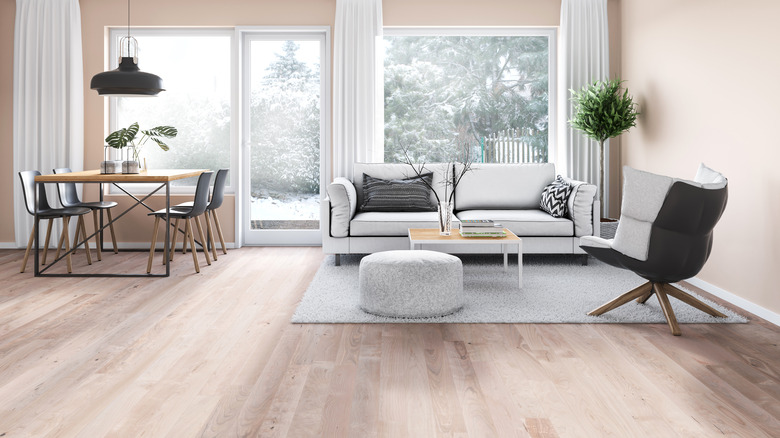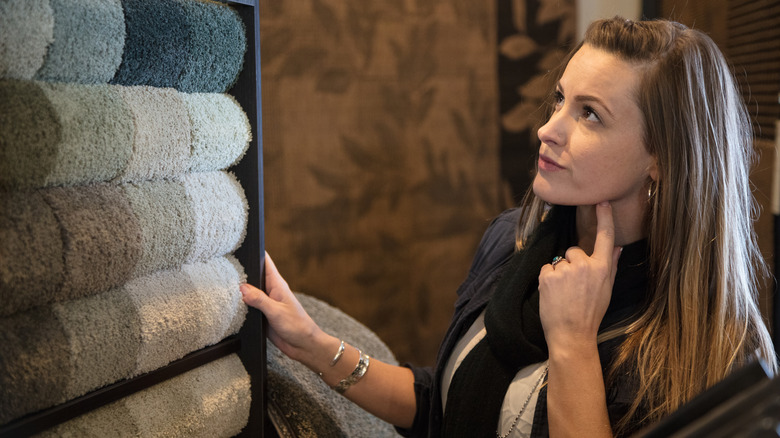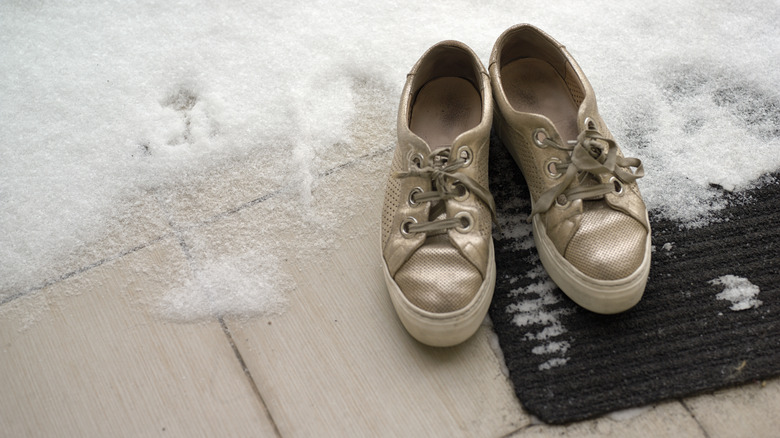The Best Flooring Options If You Live In A Colder Climate
Selecting the right flooring is an important part of establishing a home's overall design. There are many factors to consider, including material, style, cost, longevity, and resale value. One factor that homeowners can't overlook is climate and the effects of weather on their flooring. For those living in colder climates, winter brings with it extreme drops in temperatures and higher heating costs. It brings snow and ice that often gets tracked inside. Finally, the season brings the need for adequate insulation and surfaces that retain heat. The right flooring has the ability to create a warm and comfortable atmosphere to hide out indoors during the winter months, but the wrong flooring can create a cold frigid space that no number of blankets and fuzzy slippers can warm up.
For flooring that will stay cozy all winter long, there are a few options that stand above the rest. Unlike concrete, natural stone, and ceramic tile, which can all run cold, some materials are better suited for colder climes. BuildDirect advises that homes in colder climates can benefit from utilizing vinyl plank, laminate, carpet, and tile flooring with a radiant heating system. Unlike hardwood, none of these materials are prone to expanding and warping with the humidity fluctuations that winter brings. They all come with different strengths and weaknesses related to climate, cost, design, and more.
Below, we break down the key differentiating factors between these floors to help you decide which material is best for your home.
Weighing the cost?
If you're looking for floors that'll stay cozy all winter long, you're likely also considering the material's cost, durability, and certain factors that could add resale value to your home. In terms of upfront cost, laminate floors are a cost-effective solution, usually only running between $0.79 to $3 per square foot. Vinyl plank flooring is slightly more expensive, at $2 to $7 per square foot. Carpet falls between these two at $1 to $4 per square foot. Finally, radiant heating is the warmest and the most expensive option, costing between $6 to $24 per square foot for the heating system, and an extra $10 to $15 per square foot for tile. Added installation costs can significantly increase your flooring expenditures, with radiant heating and tile being the most costly.
Although cheaper up front, some flooring choices can hurt the resale value of your home. Carpet, laminate, and vinyl may be inexpensive, but these can be unattractive to future buyers. These consumers aren't interested in wall-to-wall carpets, and most people are getting rid of carpet flooring, as opposed to installing it. Laminate and cheap vinyl also compromise resale value, as buyers are interested in not just the appearance of the flooring, but also how well it'll hold up over time.
In a cost-benefit analysis, tile flooring with radiant heating is the priciest choice, but the best overall selection. High-quality vinyl plank flooring comes in second as an affordable alternative that won't turn off buyers like cheap laminate or carpets.
Prepping your floors for winter
Overall, a radiant heating system paired with attractive contemporary tiles is worth the investment. It's waterproof, increases your home's value and comfort in the winter months, and it's an energy-efficient way to heat your home. Quality waterproof vinyl plank flooring is a cost-effective option that still looks attractive, warms up quickly, and stands up to moisture that gets tracked in. But if re-flooring your home isn't in the budget, there are simple things you can do with your floors to prep your home for cold weather.
If you have hardwood floors especially, you'll need to provide them with some extra winter care. Wood floors aren't ideal because of the material's natural propensity to expand during the warmer months and contract in colder weather. This can cause small, visible gaps between the flooring's wood planks. But for hardwood, carpets, non-waterproof vinyl, or laminate, it's important to protect your floors from sand, salt, and snow, which all cause stains and damage. For any non-waterproof surface, it's advisable to put waterproof mats in front of entrances and to remove shoes before coming indoors.
One of the easiest ways to avoid damage, create warmth, avoid slips, and hide gaps in hardwood floors is the addition of an area rug. You can add a rug to almost any room for an affordable solution. Not only do new rugs give you a revamped winter aesthetic, but they're a great way to save money and stay warm all winter long.


